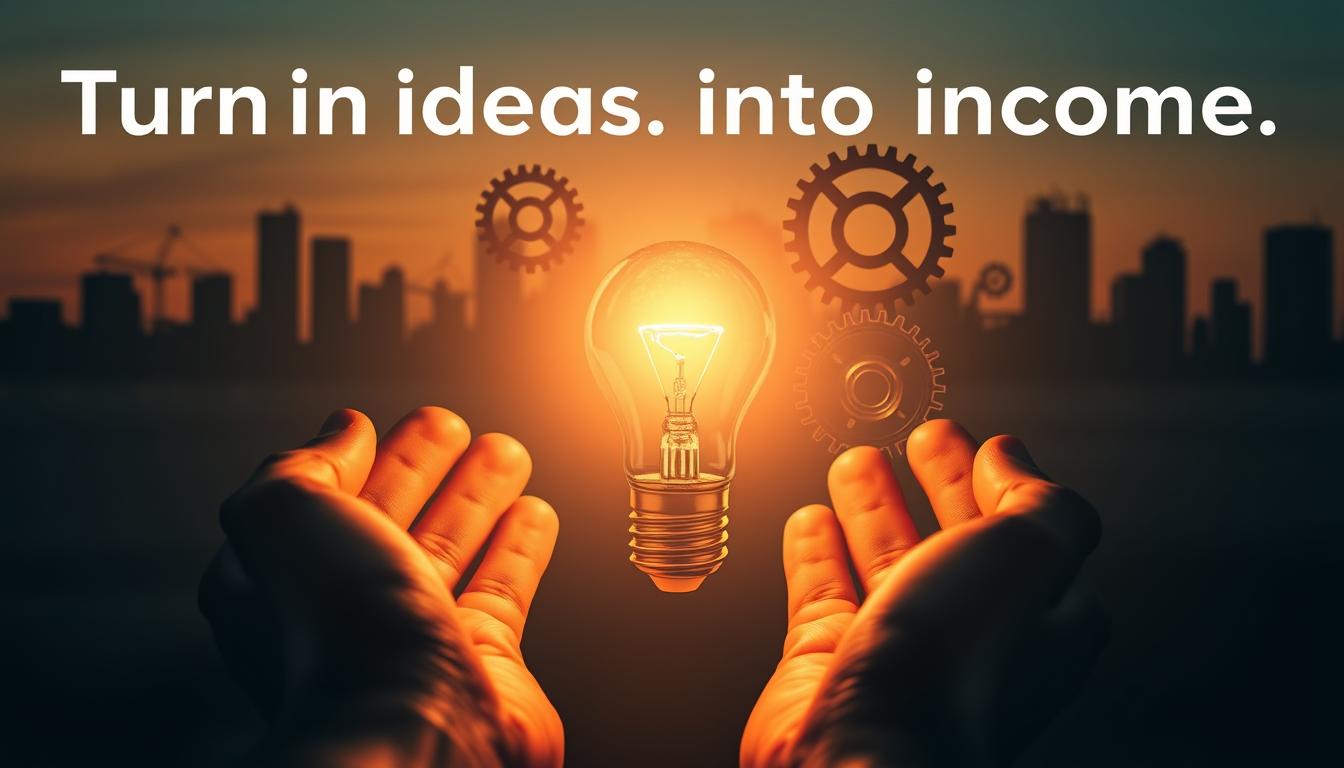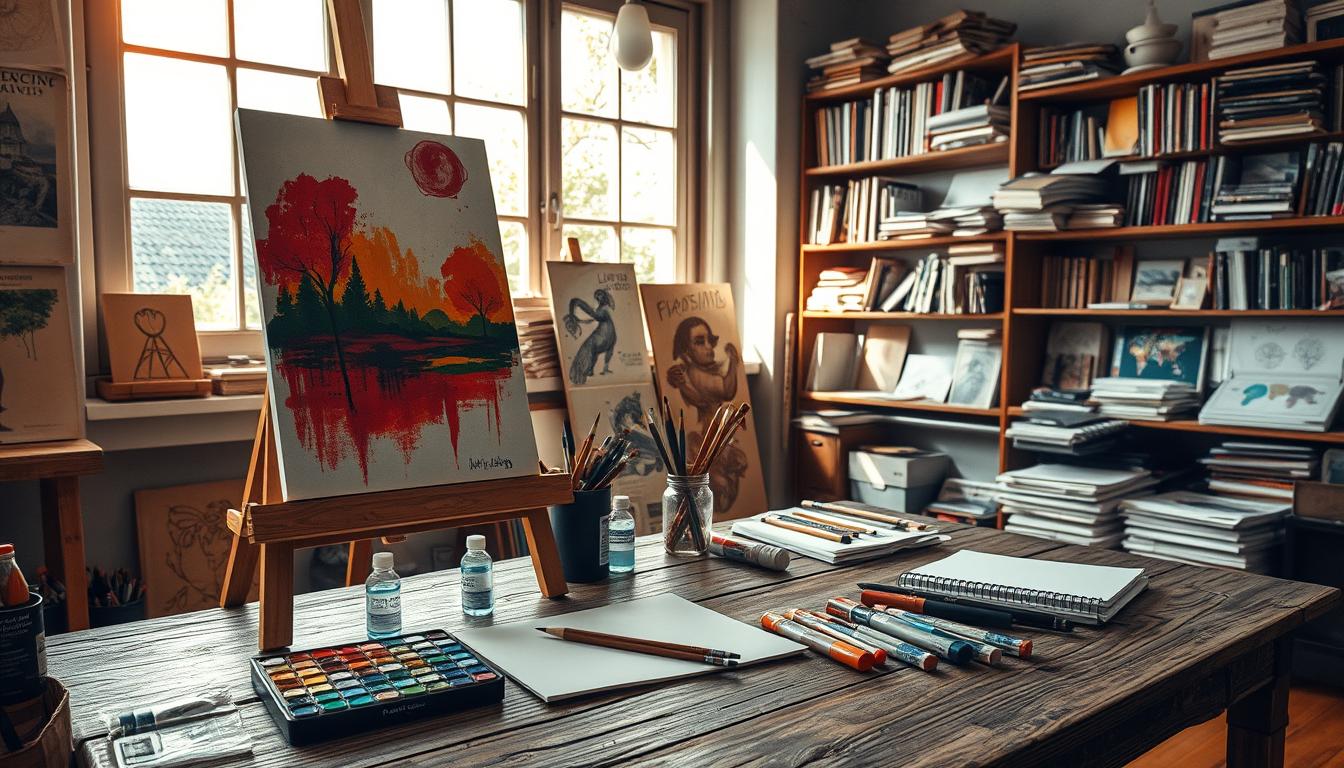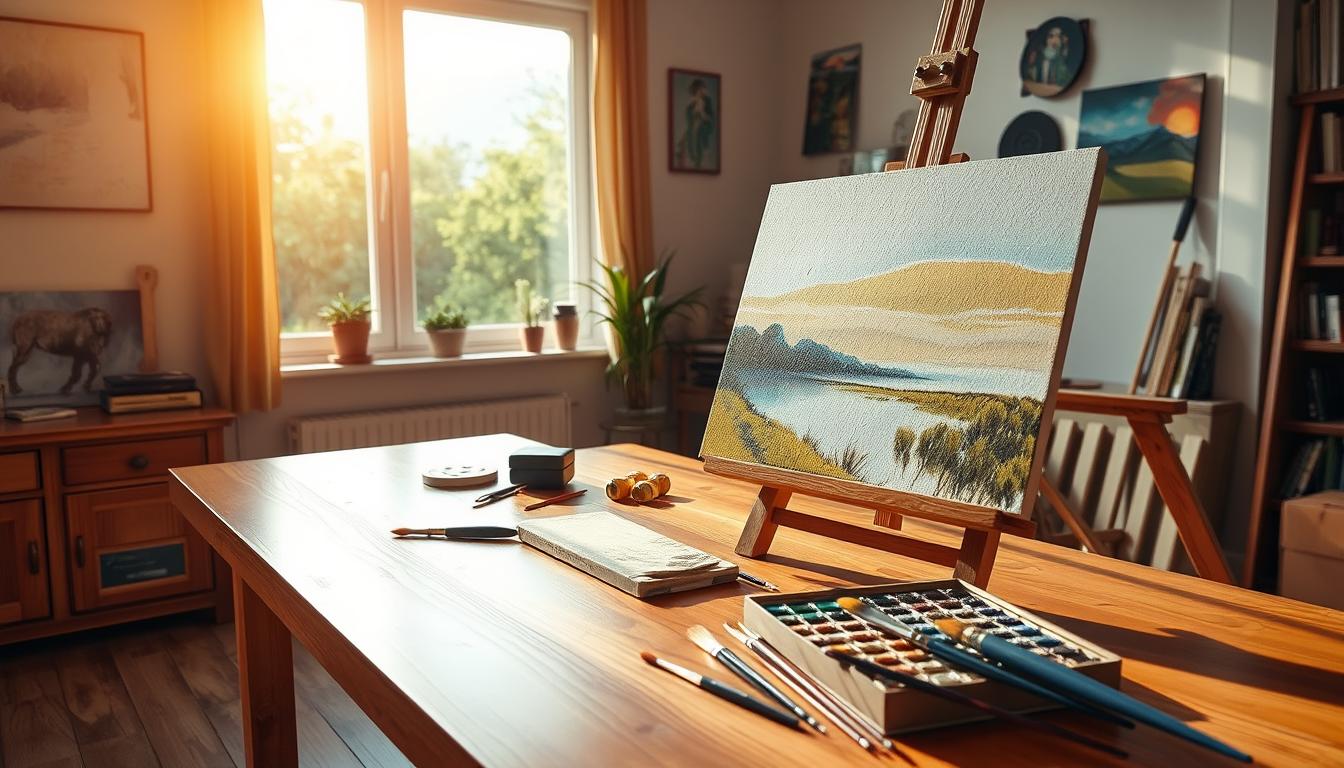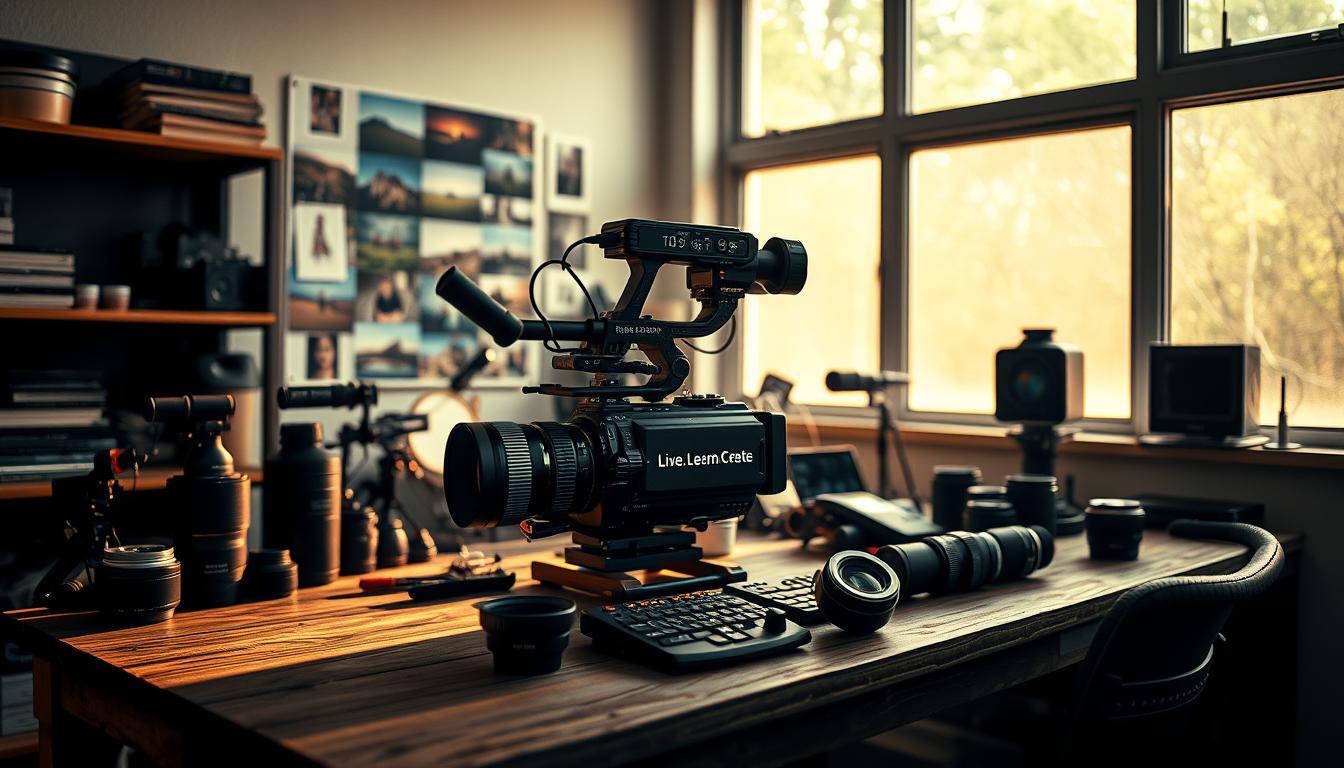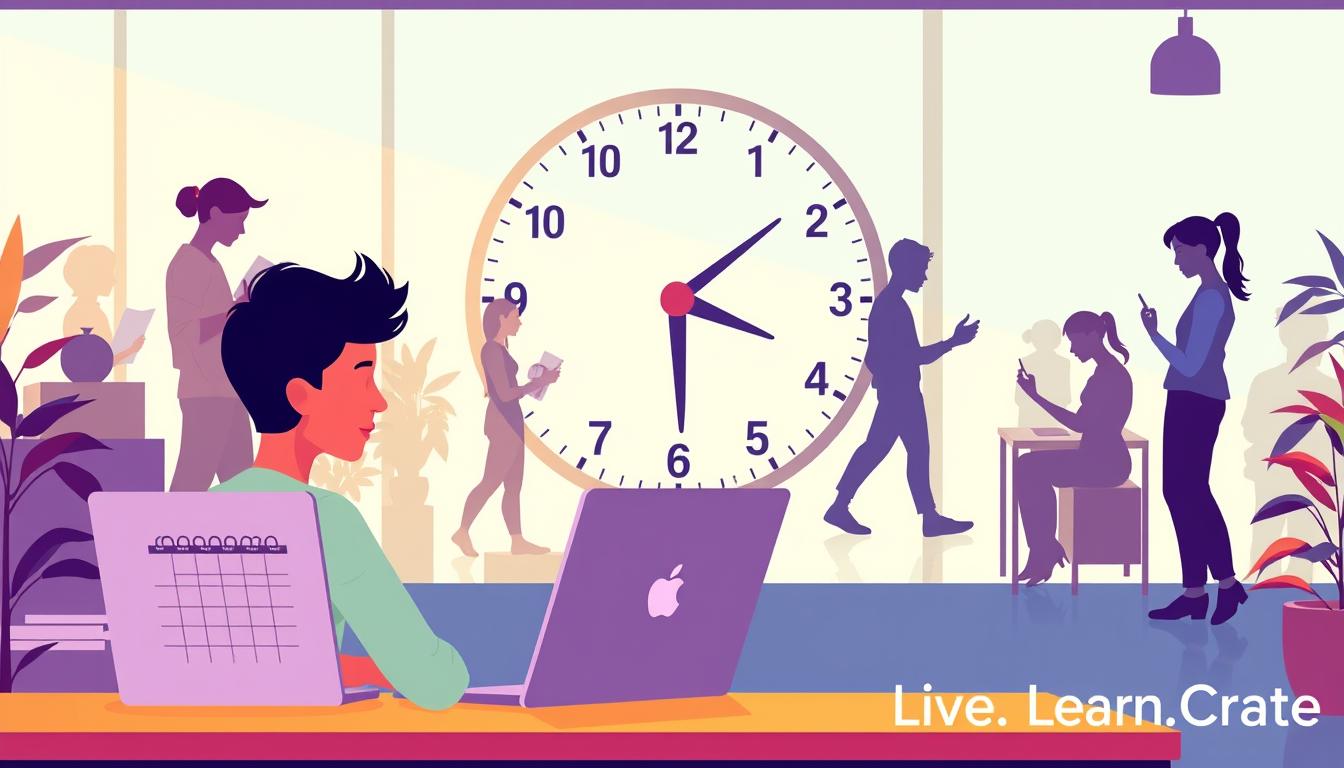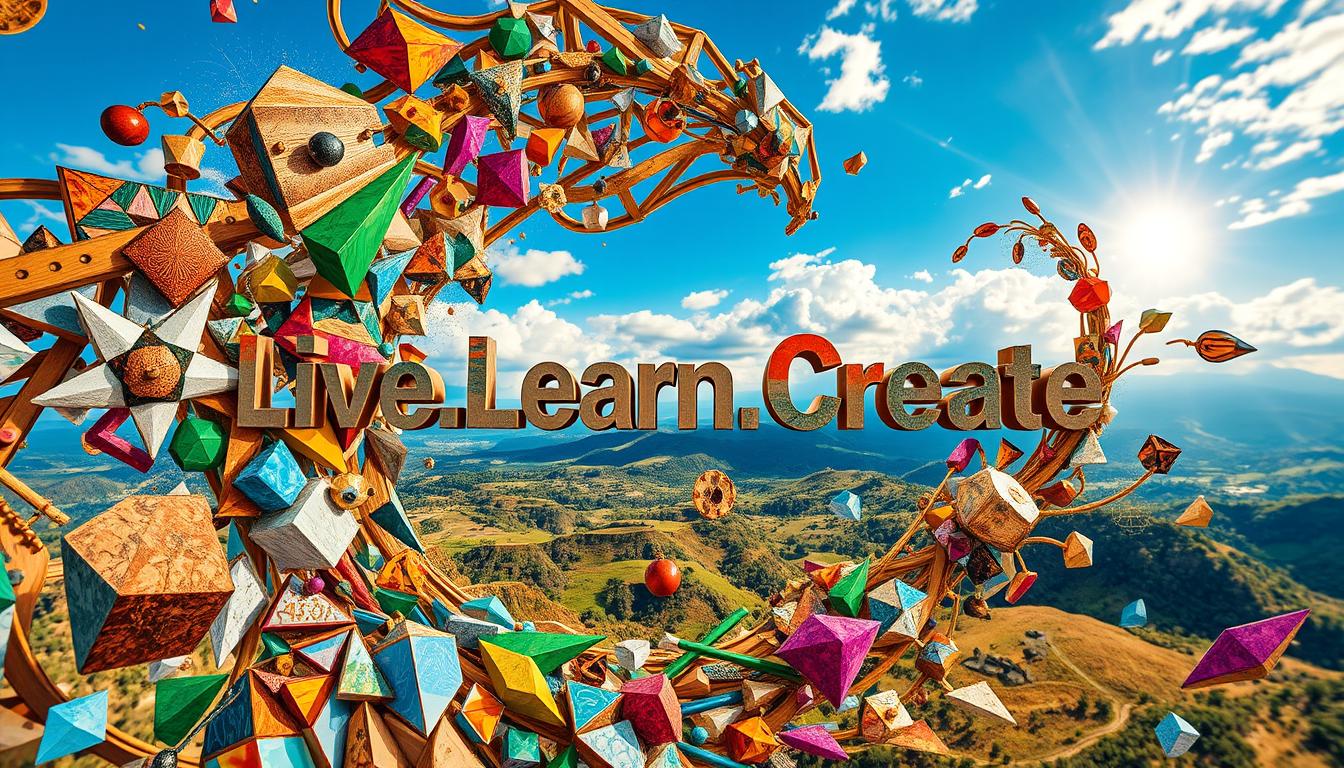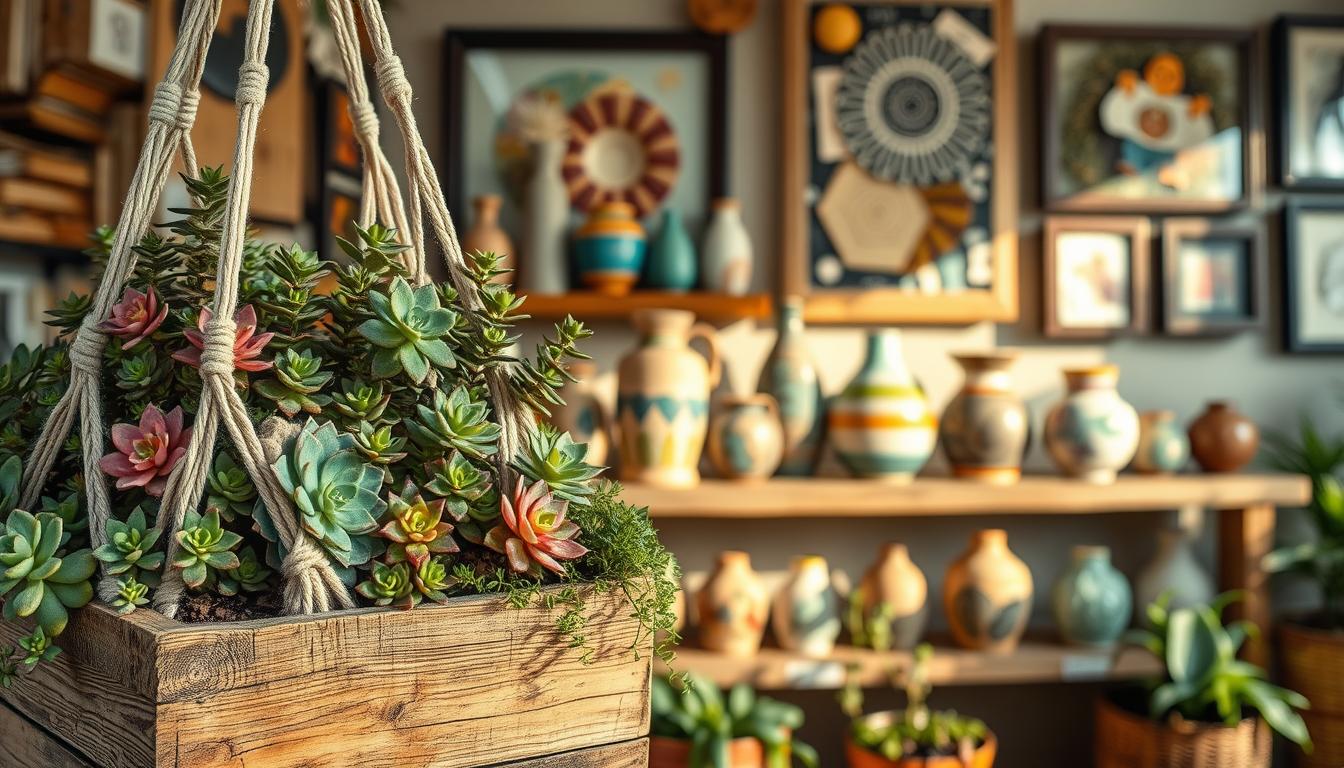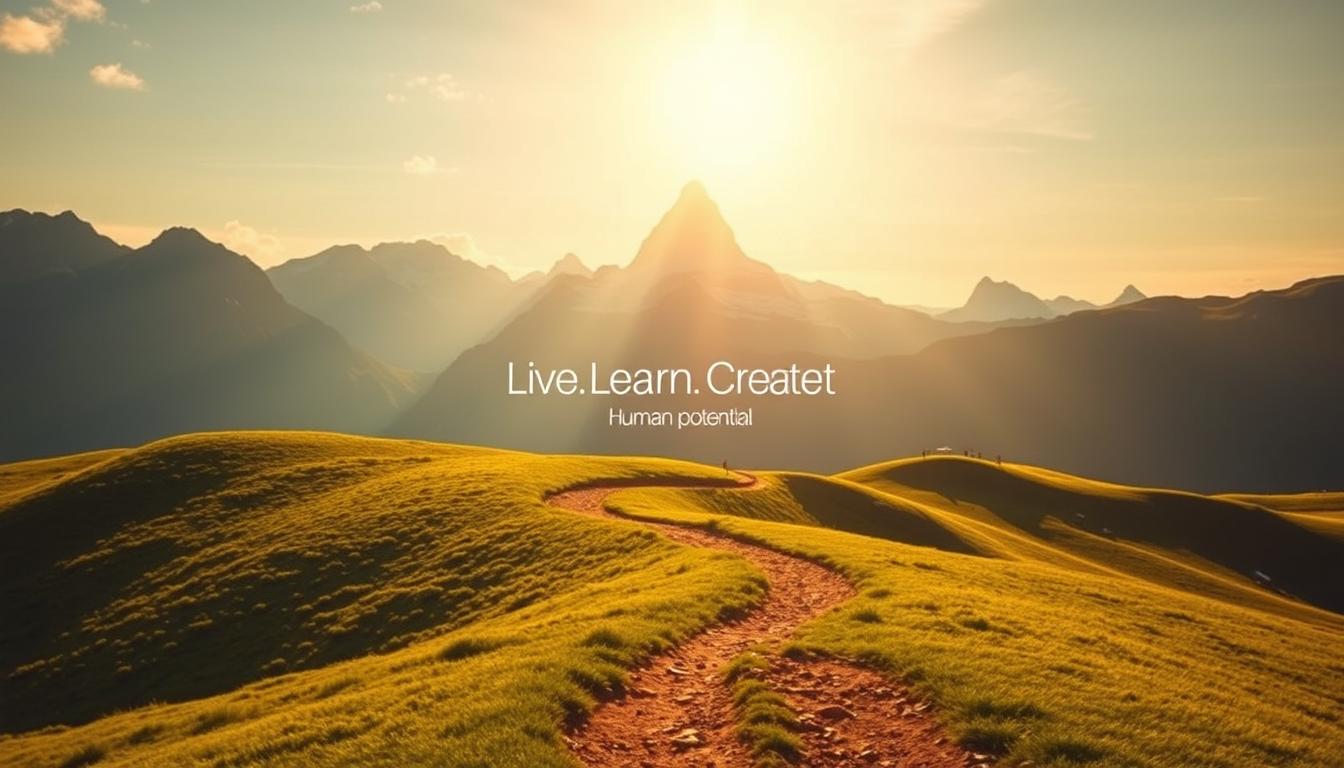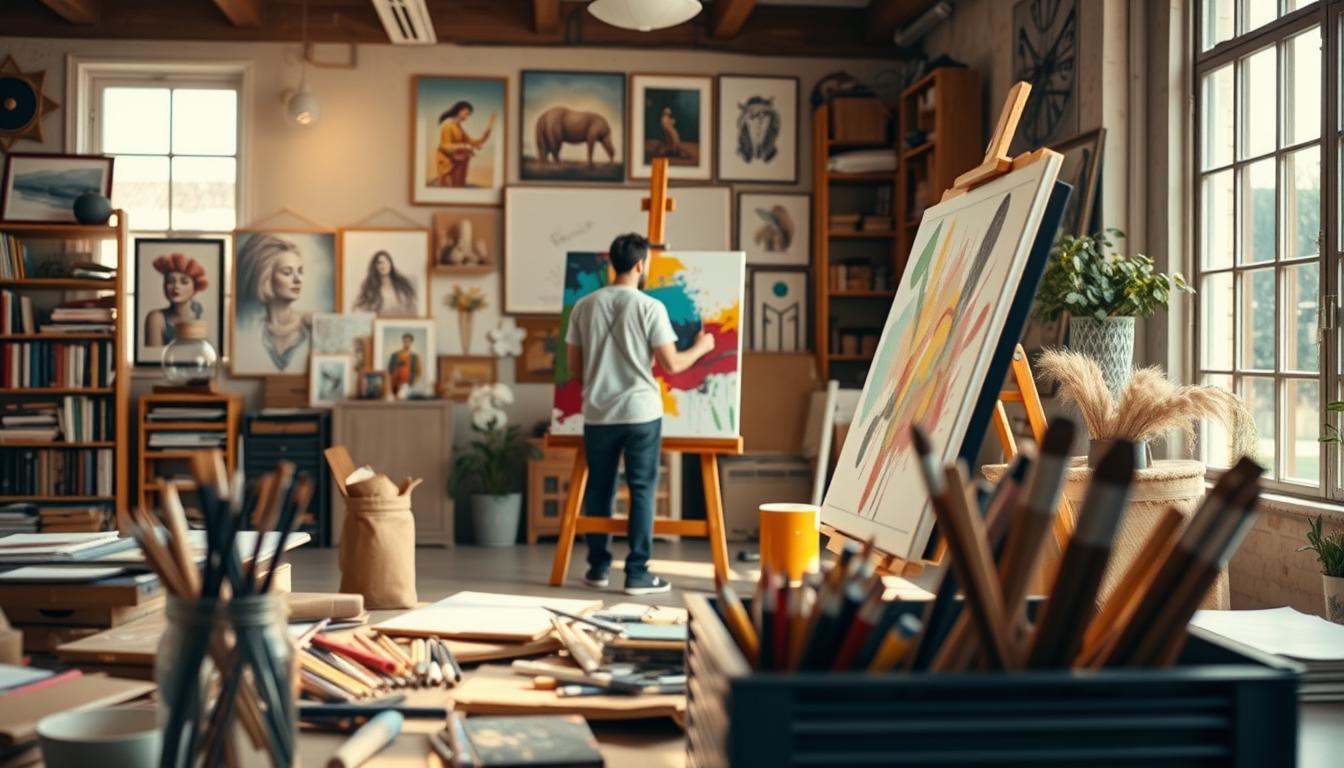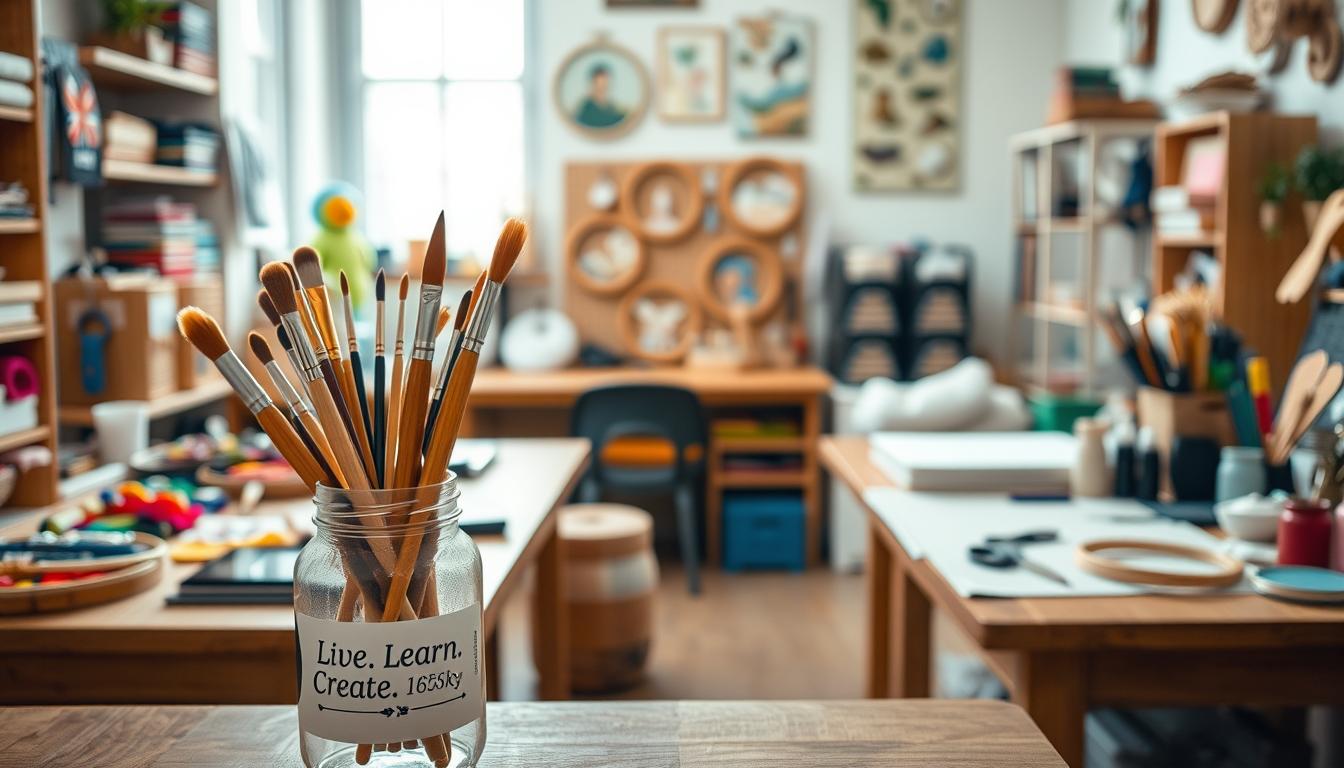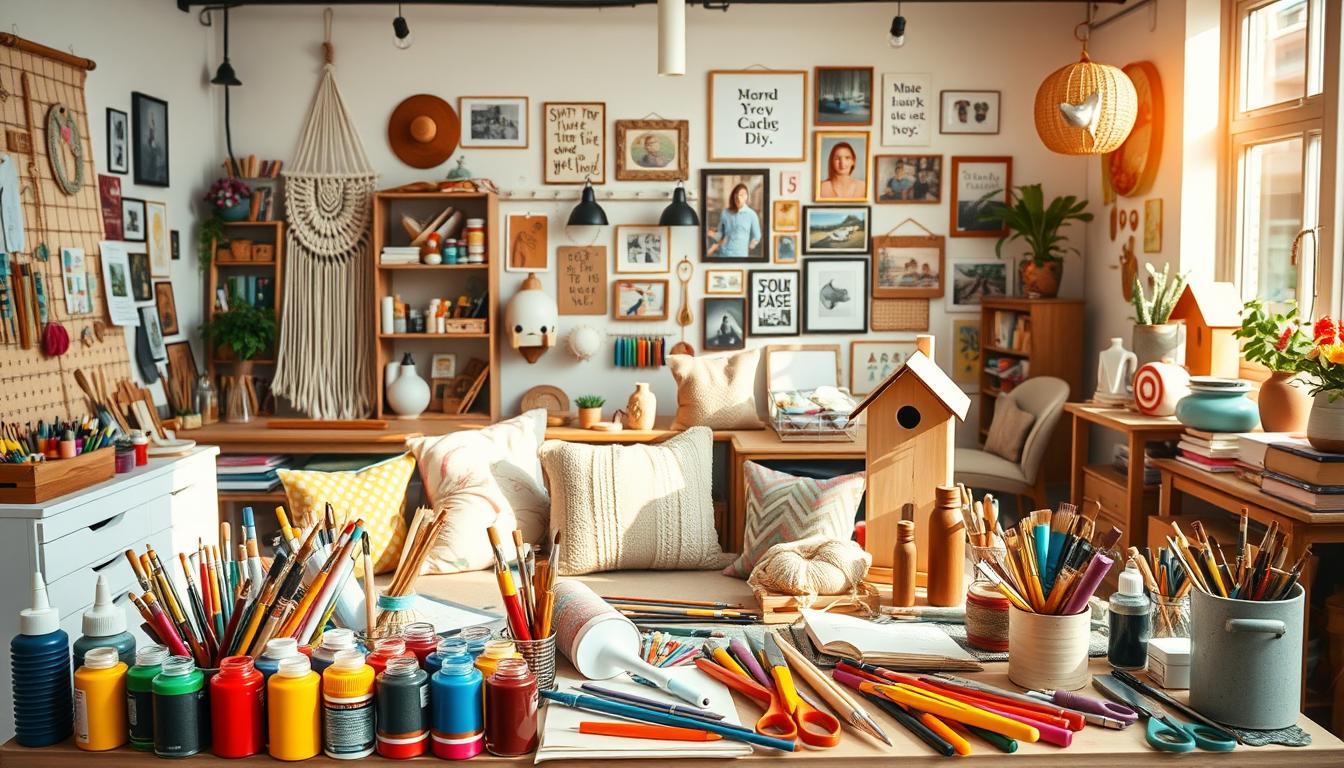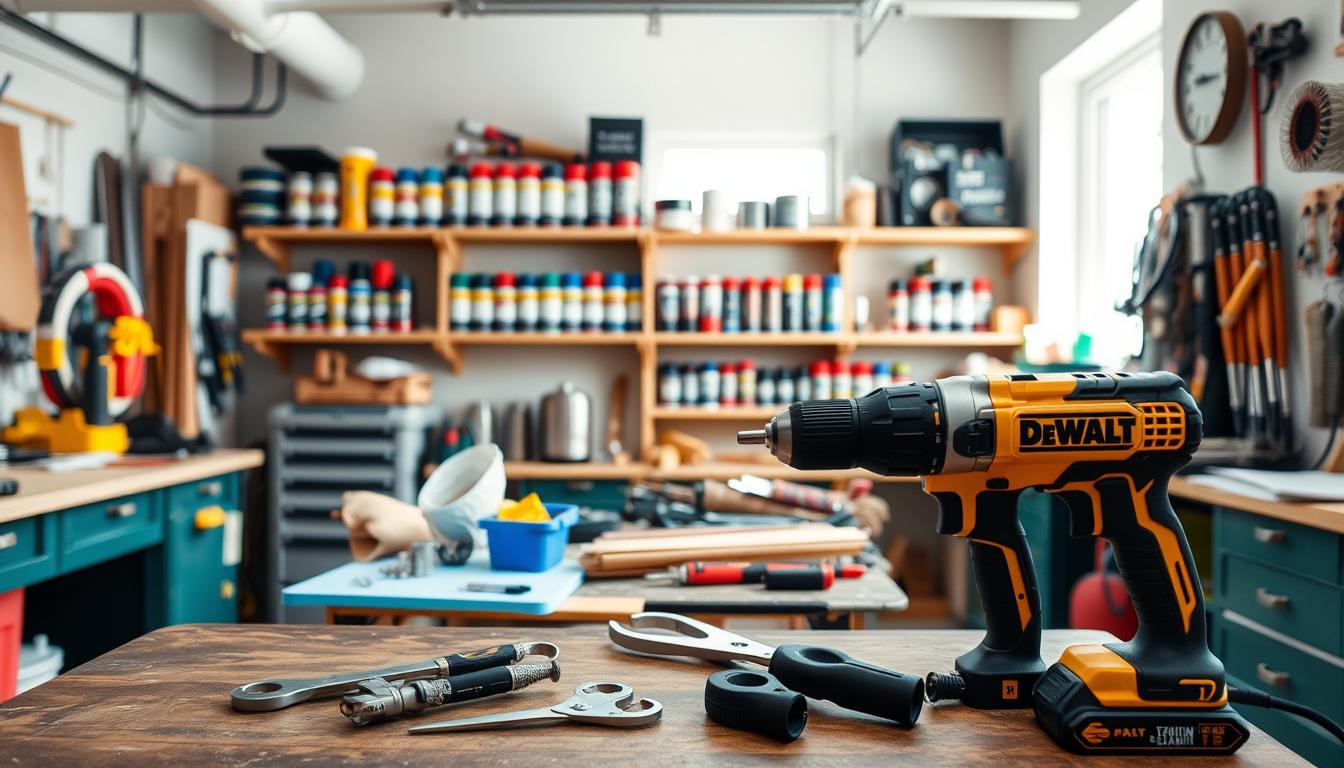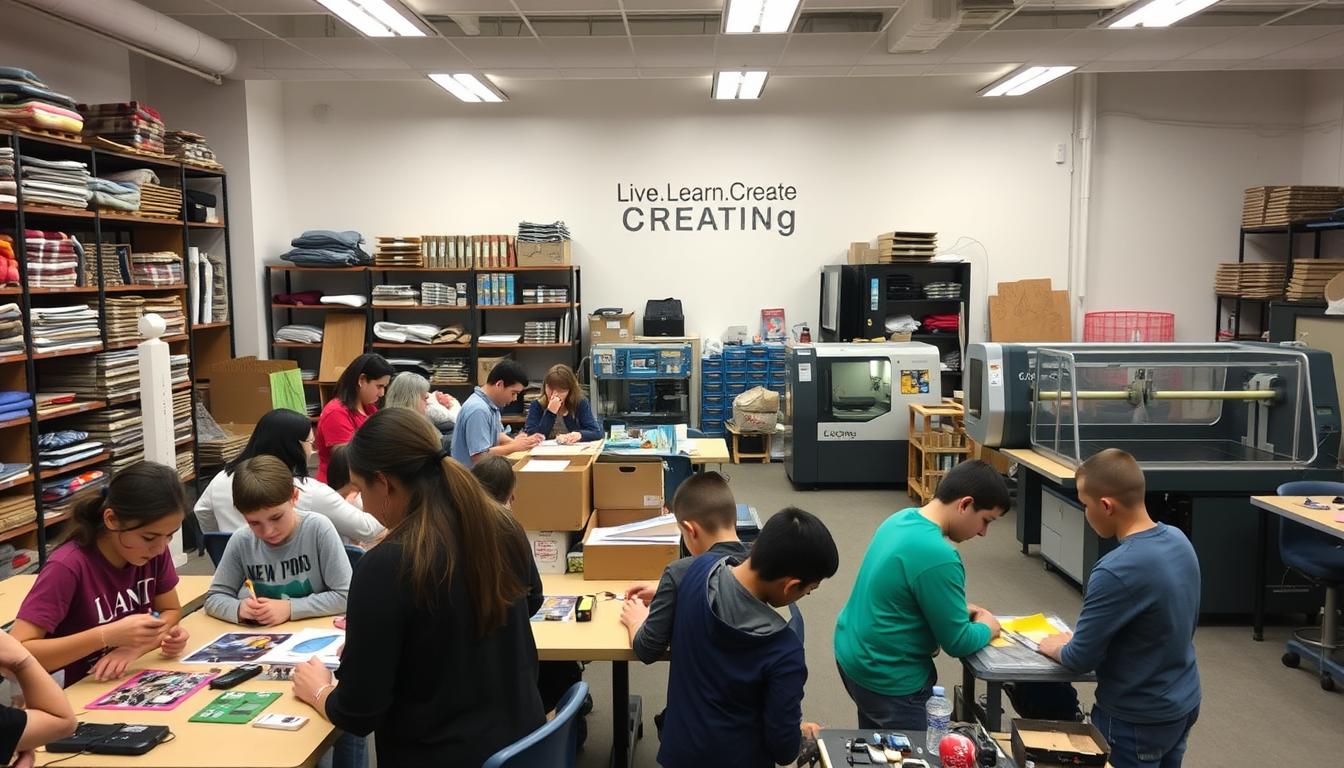Ever wondered how some people turn simple thoughts into thriving businesses? Your mind is a goldmine of untapped potential—every idea could be the start of something amazing. I’ve been there too, transforming small sparks of inspiration into steady income streams, and I’m here to show you how.
Creativity isn’t just for artists—it’s a skill anyone can develop. Whether you’re sketching a new product or brainstorming a side hustle, your daily efforts add up. Resources like Carmen Galloway’s books on Barnes & Noble or Apple Books, along with her Udemy courses, offer practical steps to nurture your growth.
Think of creativity as your superpower. Ordinary people achieve extraordinary results by simply taking action. No magic, no mystery—just consistent work and belief in your vision. Ready to start your journey?
Key Takeaways
- Your ideas hold real financial potential—start treating them that way.
- Creativity is a learnable skill, not just innate talent.
- Small, daily actions build momentum toward income-generating results.
- Carmen Galloway’s books and courses provide trusted guidance.
- Success comes from persistence, not perfection.
What Is CREATIVITY and Why Does It Matter?
What if your ability to think differently could become your most valuable skill? Creativity isn’t just about art or invention—it’s how we solve problems, adapt, and thrive. As Linda Naiman puts it, it’s “turning ideas into reality through novel connections.” Whether you’re redesigning a workflow or brainstorming a side hustle, this skill transforms ordinary moments into opportunities.
Defining Creativity: Beyond Art and Innovation
Forget the myth of the lone genius. Creativity lives in everyday choices—like a parent improvising a bedtime story or an entrepreneur spotting gaps in the market. Ruth Richards calls this “everyday creativity,” where small, original acts build resilience and joy.
Neuroscience backs this up. When you brainstorm, your brain activates networks linking memory, emotion, and logic. It’s not magic; it’s cognitive science.
The Science Behind Creative Thinking
Maria Popova describes creativity as a “combinatorial force”—your experiences colliding to spark new ideas. Studies show that diverse hobbies (like cooking or hiking) fuel this process by strengthening neural pathways.
Yet, an Adobe study found only 25% of people feel they’re using their full potential. Why? Many believe creativity is innate, but Robert Epstein’s research proves it’s a learnable skill. Practice matters more than talent.
Why Creativity Is Your Greatest Asset
In a world where AI handles routine tasks, human innovation is irreplaceable. IBM reports 60% of CEOs prioritize creativity for business survival. From freelancers to Fortune 500 teams, those who think flexibly outearn and outlast others.
Ready to develop yours? Carmen Galloway’s Udemy courses break down the process into actionable steps. Because your next idea? It could be the one that changes everything.
The Link Between Creativity and Income Generation
The most profitable ideas often start as simple solutions to overlooked problems. When you reframe challenges as opportunities, everyday frustrations become income streams. Harvard Business School’s design thinking framework proves it: innovation thrives when we solve real problems with empathy.
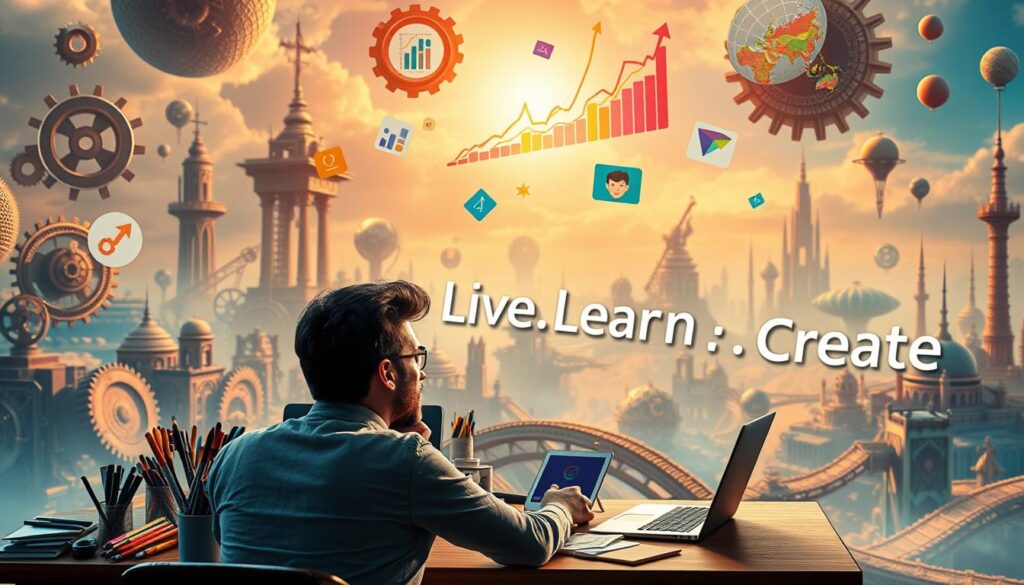
How Innovative Thinking Solves Profitable Problems
Clayton Christensen’s research shows innovators share five behaviors—questioning, observing, networking, experimenting, and associating. A mom in Ohio turned her kitchen struggle into a viral gadget by asking, “Why isn’t there a better way?” Her $20 invention now earns six figures annually.
Virgin Group’s ABC-D mantra (Always Be Connecting Dots) reveals how small insights create value. A freelancer I coached 5Xed her income by repackaging her services as “productivity audits” instead of generic consulting.
Case Studies: Ordinary People Earning Extraordinary Income
Carmen Galloway’s book highlights a teacher who monetized her lesson plans online. She spotted a hidden problem: educators lacked time to create engaging materials. Her store now earns passive income while helping classrooms nationwide.
Try the “15-minute innovation” method:
- Jot down three daily frustrations
- Brainstorm solutions during coffee breaks
- Test ideas with free tools like Google Forms
Low-risk validation separates fleeting thoughts from viable ventures.
Pricing creative work? Service-based models (coaching, design) scale with time, while products (ebooks, templates) offer passive growth. Both start with one insight: your unique perspective has market value.
Breaking Down Mental Barriers to Creativity
Have you ever stopped yourself from pursuing an idea because you thought you weren’t “the creative type”? You’re not alone—but research proves your mind is far more capable than you realize. Let’s dismantle the invisible walls holding you back.
Myths That Hold You Back (And How to Debunk Them)
The “born creative” myth crumbles under scrutiny. Mozart trained for 16 years before composing masterpieces—genius isn’t innate, it’s cultivated. Exeter University’s study found that practice alters brain structure, strengthening creative neural pathways.
Fear of judgment? Psychology Today explains how our brains amplify criticism. Try this reframe: “What if my ‘silly’ idea solves someone’s problem?” HP’s “Rules of the Garage” remind us: “Believe you can change the world—and work quickly.”
Building Confidence in Your Creative Abilities
Carmen Galloway’s journey from self-doubt to bestselling author started with small wins. She began journaling one idea daily—no filters. Within months, her beliefs about her potential shifted.
Robert Epstein’s generativity research suggests three confidence-builders:
- Reframe failure: Call it “data collection” instead.
- Celebrate micro-wins: Finished a draft? That’s progress.
- Change your environment: A clutter-free space = clearer thinking.
Your experiences matter. Every idea you’ve ever dismissed could be the way forward. Start today—your breakthrough might be one affirmation away.
Practical Steps to Harness Your Creative Potential
Creative breakthroughs aren’t accidents—they’re built through intentional routines. I’ve seen clients transform chaotic ideas into thriving projects by adopting simple, repeatable systems. Let’s explore how you can do the same.

Daily Habits of Highly Creative People
George Land’s study revealed creativity is a learned behavior, not luck. Top performers share habits like:
- Morning rituals: 20 minutes of free-writing or sketching to spark fresh ideas.
- Idea capture: Use apps like Evernote or a pocket notebook to log thoughts instantly.
- Creative cross-training: Dabble in unrelated hobbies (cooking, hiking) to fuel neural connections.
Carmen Galloway’s Udemy courses emphasize consistency over intensity. Just 15 minutes of daily practice sharpens your skills faster than sporadic bursts.
The “Idea Funnel”: From Random Thoughts to Viable Projects
Design thinking’s ideation phase teaches us to filter ideas strategically. Try this 5-step process:
| Step | Action | Tool |
|---|---|---|
| 1. Capture | Record every idea without judgment | Voice memos or sticky notes |
| 2. Cluster | Group similar concepts | Miro board or whiteboard |
| 3. Validate | Ask: “Does this solve a real problem?” | Google Forms surveys |
| 4. Prototype | Build a quick test version | Canva or Figma |
| 5. Scale | Refine based on feedback | Trello for task management |
Branson’s ABC-D method (Always Be Connecting Dots) turns random insights into action. One student used this to monetize her poetry—now she sells custom verses online.
Balance structure with spontaneity. Time-block creative work, but leave room for play. Your next big idea is already brewing—you just need the right way to catch it.
Tools to Develop Your Creativity
The right tools can transform your creative sparks into steady flames of income. Whether you prefer self-paced learning or structured training, having the right resources makes all the difference. Let’s explore the best options to fuel your growth.
Carmen Galloway’s Books: Your Creativity Library
Carmen’s books offer deep dives into creative thinking. Here are three must-reads available on Barnes & Noble and Apple Books:
- Vision Board Planner – Step-by-step monetization frameworks
- The Path to Personal Power – Daily practices for consistent innovation
- The Growth Mindset Manual: Your Path to Success – Overcoming mental blocks
Books give you flexibility—highlight passages, revisit concepts, and learn at your own pace.
Carmen Galloway’s Courses: Structured Learning on Udemy
Her Udemy courses provide interactive training with actionable steps. The “Creative Launchpad” program includes:
- Video lessons with worksheets
- Community feedback on projects
- Certificate upon completion
Structured courses work best when you need accountability and peer support.
Other Resources to Fuel Your Growth
Build your personal toolkit with these complementary resources:
| Category | Tool | Best For |
|---|---|---|
| Mind Mapping | Miro | Visualizing connections |
| Community | CreativeMornings | Networking & inspiration |
| Time Management | Focus@Will | Productivity & health |
| Free Learning | TED Talks | Quick inspiration |
One student combined Carmen’s courses with these tools to build a six-figure design business. Start small—even one new resource can change your creative environment.
Turning Creative Ideas into Marketable Products
Market success starts with validating your ideas before investing time and money. The lean startup movement revolutionized product development with its Minimum Viable Product (MVP) approach—test fast, learn faster. Sternberg & Lubart’s research shows winning ideas balance novelty with appropriateness, solving real needs in fresh ways.
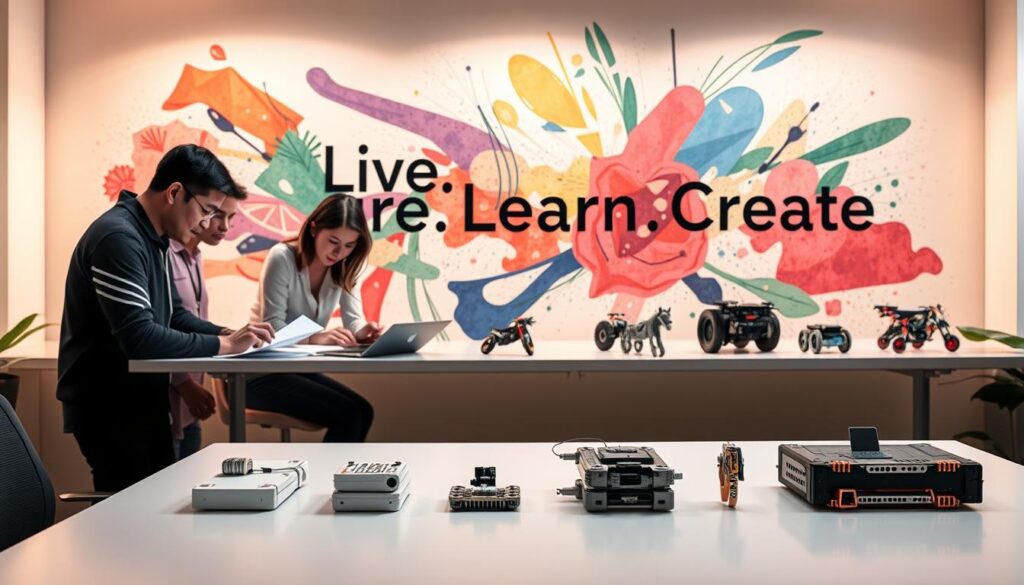
Validating Your Ideas with Minimal Risk
Try this 5-question checklist to test any concept:
- Problem-first: “Does this address a frustration people will pay to solve?” (Hint: Search Reddit forums for complaints)
- Uniqueness: “What makes my solution 10% better than existing options?”
- Feasibility: “Can I build a basic version in under 40 hours?”
- Audience: “Who would buy this tomorrow if it existed?” (Create buyer personas)
- Scalability: “Could this grow beyond my personal capacity?”
Carmen Galloway’s Udemy module on productization teaches low-cost testing methods. One student validated her planner design using a $20 Canva prototype—now it’s a bestselling item on Etsy.
Monetization Models for Creative Work
Choose your revenue path wisely:
| Model | Best For | Example |
|---|---|---|
| Licensing | Artists, inventors | Photographers selling stock images |
| Direct Sales | Physical/digital products | Printable templates on Gumroad |
| Hybrid | Service providers | Coaching + course bundles |
Pricing psychology matters. A graphic designer 3Xed her income by:
- Anchoring premium packages at $1,200 (making $500 options seem reasonable)
- Offering “done-for-you” services alongside DIY templates
- Creating limited-time bonuses for urgency
For passive income, consider:
- Subscription content (Podcasts with Patreon tiers)
- Digital marketplaces (Creative Market, Teachers Pay Teachers)
- Royalty streams (Music licensing, book translations)
Remember—your experiences shape unique offerings. A baker turned her gluten-free struggle into a thriving blog with sponsored recipes. Start small, but start smart.
Sustaining Creativity for Long-Term Success
Your creative capacity evolves like seasons—learning to flow with these changes ensures lifelong innovation. While initial sparks feel exciting, the real magic happens when we nurture our mind and methods through different phases of life. I’ve coached hundreds through this journey, and the happiest creators aren’t those with rare talent, but those who master renewal.
Energy Management: The Anti-Burnout Framework
Psychology Today’s research reveals that creative exhaustion stems from mismatched energy allocation. Unlike time management, which treats hours as equal, energy management honors your natural rhythms. Try this approach:
| Energy Type | Creative Task | Restorative Activity |
|---|---|---|
| Peak (2-4hrs/day) | Original ideation | Deep breathing |
| Moderate | Editing/refining | Walking meetings |
| Low | Administrative work | Power naps (20 min) |
Carmen Galloway’s five-year evolution shows this principle in action. She shifted from marathon writing sessions to 90-minute “sprints” with yoga breaks—tripling her output while improving health.
Adapting Your Process Through Life Stages
Epstein’s generativity theory proves creative methods must evolve with our experiences. The college student’s all-nighter approach rarely serves the parenting entrepreneur. Consider these phase-specific adjustments:
- Early Career: Experiment wildly—quantity builds skill
- Mid-Career: Curate focus areas—depth creates authority
- Later Years: Mentor others—wisdom compounds
IBM’s “bold creativity” leadership study found top innovators schedule quarterly “creative sabbaticals”—even just a day to explore unrelated interests. One graphic designer credits her bestselling font collection to a summer pottery class.
Your turn: Take this 30-second adaptability check:
- When did I last change my creative routine?
- What current life change requires adjustment?
- Which tool/mentor could ease this transition?
Remember, reinvention isn’t starting over—it’s building on all you’ve learned. The way you create today might differ from five years ago, and that’s not just okay—it’s progress.
Conclusion:
Your Next Steps Toward Creative Income
Today’s small actions create tomorrow’s creative freedom. You’ve learned how ordinary ideas become extraordinary income—through validation, persistence, and the right growth mindset. Remember the book designer who turned rejected drafts into passive income? That could be your story.
Your starter kit:
- Pick one idea to prototype this week
- Join Carmen’s Udemy community for accountability
- Check for Carmen Galloway’s latest new releases on Barnes and Noble and Apple Books.
Creative work thrives on continuous learning. Whether through Carmen’s books or local meetups, keep nurturing your skills. This isn’t a finish line—it’s your life-changing beginning.
I believe in your potential. Now, lead your creative journey forward. The world needs what only you can imagine.
Explore a range of resources designed to enhance your creative skills. Whether you’re looking for inspiration or structured guidance, Carmen Galloway’s works provide valuable insights into the creative process.
Join interactive courses that challenge you to think differently and expand your creative horizons. Each course is crafted to help you develop a robust creative mindset.
FAQ
What’s the first step to turning ideas into income?
Start by identifying a problem people face—then explore how your unique perspective can solve it. Small tests, like surveys or prototypes, help validate demand before full commitment.
Can anyone develop creative thinking skills?
Absolutely. Like any skill, innovation grows with practice. Daily habits—such as journaling or brainstorming—train your brain to spot opportunities others miss.
How do I overcome self-doubt about my ideas?
Replace doubt with curiosity. Ask, “What if this works?” instead of fearing failure. Confidence builds through action—even small steps count.
What’s the fastest way to monetize a creative project?
Focus on low-risk models first—digital products, freelance services, or licensing. These require minimal upfront investment while testing market interest.
How do I stay motivated when progress feels slow?
Track small wins. Celebrate learning moments, not just outcomes. Sustainable growth comes from consistency, not overnight success.
Are tools like Carmen Galloway’s courses helpful for beginners?
Yes! Structured learning—whether through books or courses—provides frameworks to channel ideas effectively. It’s like having a roadmap for your journey.
What’s the biggest myth about earning income creatively?
That it’s only for “talented” people. In reality, success comes from solving real problems—not waiting for perfection.
Transform your home into a more peaceful and mindful sanctuary. Creating a Zen-inspired home environment is a core part of the “Live.Learn.Create” theme, focusing on peace, mindfulness, and a clutter-free space. Here is a curated list of Zen home items.
The Zen Essentials
These items are the building blocks of a calm, intentional living space.
- Candles & Scents:
- Scented Candles: Look for calming, natural scents like sandalwood, lavender, white tea, or bergamot. Choose candles made with soy or beeswax for a clean burn.
- Essential Oil Diffusers: A minimalist, sleek diffuser made of bamboo, ceramic, or glass.
- Essential Oil Sets: Look for blends specifically for relaxation, focus, or sleep.
- Incense & Burners: Natural incense sticks (e.g., palo santo, sage) with a simple, elegant burner.
The Zen Decor
This is about incorporating natural elements and simple design.
- Natural Materials:
- Wood or Bamboo Trays: For organizing candles, stones, or other small items.
- Ceramic Vases: Simple, unglazed ceramic vases in neutral colors like white, beige, or gray.
- Minimalist Art: Simple line drawings, abstract prints, or nature-inspired artwork.
- Hand-Carved Stone Coasters: Or other small stone sculptures.
- Textiles:
- Linen or Cotton Throws: A soft, neutral-colored throw blanket to add warmth.
- Jute or Sisal Rugs: These add natural texture and grounding to a space.
- Meditation Cushions (Zafu) & Mats (Zabuton): These provide comfort for meditation and add a serene touch to a room.
The Zen Ambiance
These items help create a peaceful sensory experience.
- Lighting:
- Himalayan Salt Lamps: These provide a warm, soft glow.
- Japanese-style Paper Lanterns: For a soft, diffused light source.
- Dimmable Smart Bulbs: To easily control the warmth and brightness of your lighting.
- Sound:
- Tabletop Water Fountains: The gentle sound of running water is incredibly calming.
- Wind Chimes: Made from natural materials like bamboo or metal for a soft sound.
- Bluetooth Speakers: Small, aesthetically pleasing speakers for playing ambient or meditation music.
- Nature:
- Bonsai Trees or Air Plants: Low-maintenance indoor plants that bring life and a touch of nature indoors.
- Zen Gardens: A small, tabletop sand garden with a rake and stones for a meditative ritual.
- Decorative Rocks & Pebbles: For bowls or as a decorative element.
Best Sellers https://amzn.to/3Vet1tI
New Releases https://amzn.to/4mwLjTi
Amazon Movers & Shakers https://amzn.to/4fPsZlP
Mindfulness Coloring Books https://amzn.to/4fQ0wMx
Personal Growth Coloring Books https://amzn.to/4lJeRf0
Health & Wellness https://amzn.to/4oRt24C
Zen Home Decor https://amzn.to/3VeA3i6
Zen Garden Decor https://amzn.to/4mXjT8D
Zen Garden https://amzn.to/3HQTVVB
- Mindfulness & Meditation:
- Physical Wellness:
- Habit & Productivity Tools:
- Books:
- Best-selling personal development books (Mindset, The 7 Habits of Highly Effective People, The Subtle Art of Not Giving a F*ck)
- Books on a variety of skills (coding, photography, writing.)
- Educational Gadgets:
- Smart pens that digitize notes (e.g., Rocketbook)
- Portable scanners for digitizing documents
- Laptops, tablets, and accessories
Create (Creativity, Innovation, Projects)
These products cater to your creative side, whether you are a artists, writer, or DIY enthusiasts.
- Creative Supplies:
- Adult coloring books or “paint-by-sticker” books
- Craft kits (e.g., candle-making, pottery, embroidery)
- Digital Creation Tools:
- General Inspiration & Making:

